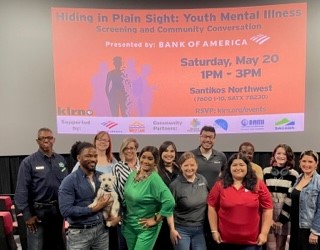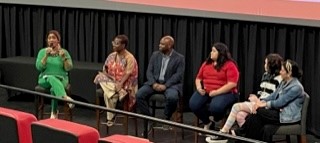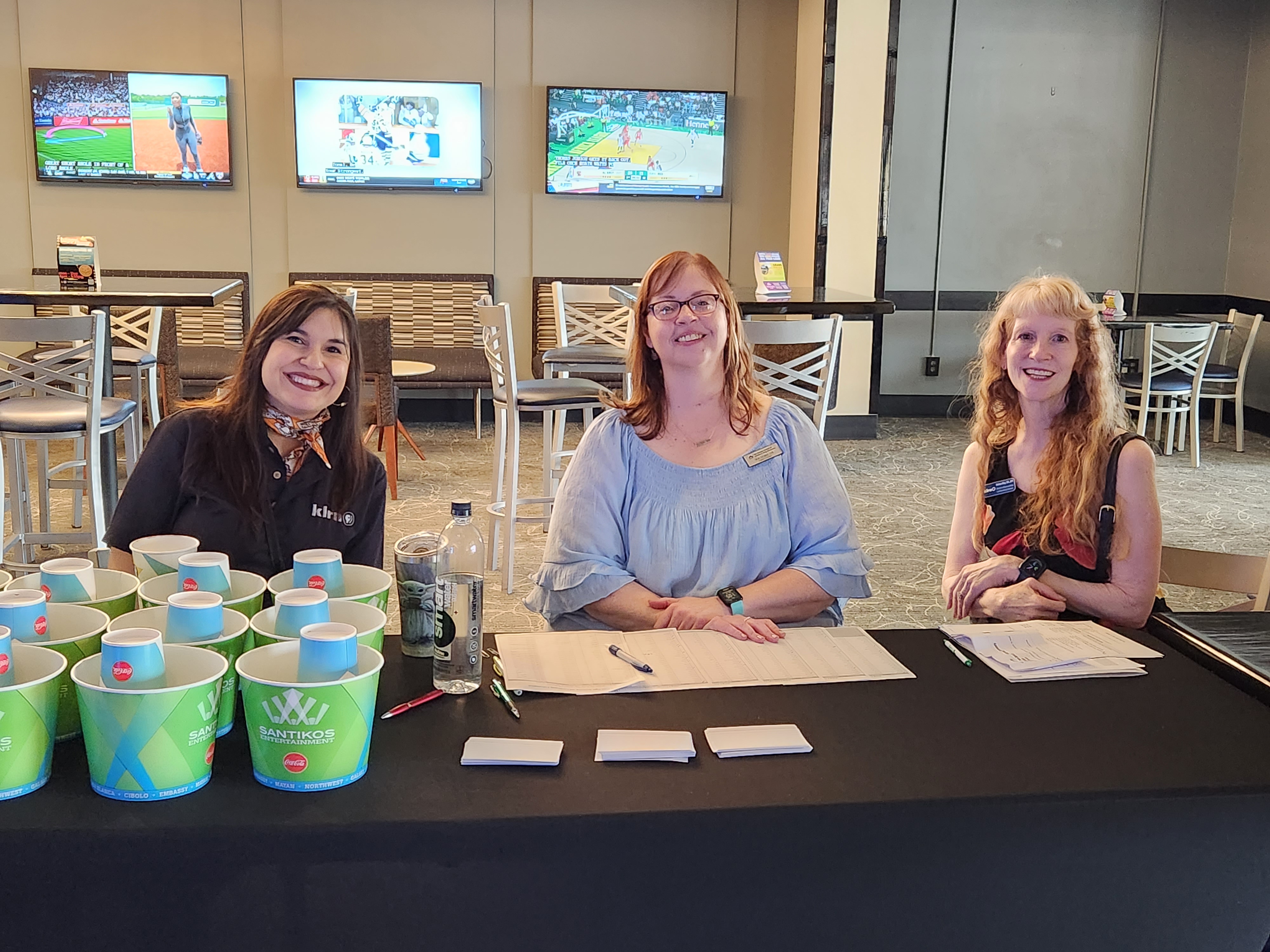|
Back to Success Stories
Hiding in Plain Sight Screening and Community Conversation
Hosted by:
Circles of San Antonio Community Coalition - San Antonio Council on Alcohol and Drug Awareness

Please briefly describe your Communities Talk activity.
The Communities Talk event that we hosted was a film screening followed by a discussion. We had local organizations partner with KLRN (our local PBS station) to host the screening of the Ken Burns documentary “Hiding in Plain Sight,” followed by a community conversation. This film explores youth mental health and addiction, as well as the importance of awareness, empathy, access to mental health care, stigmatization, and how communities can build support to help those in need. Following the screening, a panel of local health experts had a conversation on youth mental health and addiction. Panelists included a young person with a co-occurring substance use disorder and mental health diagnosis, the young person’s mother, a counselor who also works for the San Antonio area National Alliance for Mental Illness, a licensed chemical dependency counselor who works for Rise Recovery, and a mental health first aid trainer. Youth and their caretakers were invited to attend. During the community conversation, mental health wellness, resources available in the community, and how to access care was discussed. The conversation also included youth substance use with a focus on alcohol and marijuana. Youth and caregivers shared how they have used substances to attempt to manage mental health concerns, and some youths are still using these substances for those reasons. We also discussed how to tell if your young person is at risk for substance misuse and mental health diagnosis, and how to assist youth who have a substance use disorder and mental health diagnosis

How does alcohol and other drug misuse affect your community?

Alcohol and other drug misuse has affected our community a lot more since the COVID-19 pandemic. We have heard from our young people that they are experiencing more stress, anxiety, depression, and mental health concerns for themselves and their peers. In addition to these factors, we are seeing an increase in alcohol and marijuana use among youth in the San Antonio area. This data comes from the Texas School Survey of Drug and Alcohol Use. Due to these concerns about substance use, we are working with our partners and the other Drug-Free Communities coalitions in our area to do more to ask youth and parents what they need in order to assist with mental health and substance use. We have recently partnered with a local school and a local church youth group to discuss how we can support mental wellness in our young people.

Which prevention strategy(ies), as defined by SAMHSA’s Center for Substance Abuse Prevention, best fit your Communities Talk activity?
- Community-Based Process Strategy - focuses on enhancing the capacity of the community to address AOD issues through organizing, planning, collaboration, coalition building, and networking.
- Education Strategy - focuses on “two-way” communication between the facilitator and participants and aims to improve life/social skills such as decision making, refusal skills, and critical analysis.

What goal(s) did you hope to accomplish with your Communities Talk activity?
- Work with local youth mental health agencies, prevention coalitions, young people, and their caregivers to improve mental wellness and reduce substance use.

Did you accomplish your goal(s)?
Yes

What challenge(s) did you face in planning your activity this year?
- The challenge we faced in planning this event was not having the planning activities shared equitably among the planning team. Some members who volunteered to be responsible for planning tasks did not complete the assignment, which left other members of the planning team to do more work.

How did you overcome these challenges?
We used support from other planning members to make up for the work that other planning members were not able to complete. In the end, there were 3 members that banded together to get the work completed. We did not adapt our plans. Challenges were not foreseen as the planning members/team had not worked closely with the other agencies before. In the end, the event was wonderful and impactful for the attendees. A few days after the activity, we did conduct an After Action Report with the planning team to evaluate strengths and areas of improvement. We learned that it is imperative that distributing work equitably is important and that it's ok if someone can not commit to assisting in planning. Communication is key to this type of event.

What are your next steps?

- Expand our coalition with new partnerships in the community

If you’ve conducted Communities Talk activities in prior years, how has your repeated participation contributed to progress in achieving your prevention goals?
I'm not sure that our Communities Talk prevention events in previous years helped or contributed to this event. The other events were town halls focusing just on alcohol and were planned by our agency only. This event was a different topic, although alcohol and marijuana prevention and use were discussed, and involved more partners to plan and fund the event.

Organizations that conduct Communities Talk activities often involve other organizations in the planning and execution of events. Please indicate which type(s) of organizations you involved in your activity planning.
- Faith-based based organizations
- Local chapters of national organizations
- Local businesses

Which of the following best describes the primary audience(s) for your Communities Talk activity?

How did you reach and engage your primary audience(s) to encourage them to participate in your activity?
We worked with local agencies and schools in our area to promote the event. In addition, one of our partners was a local PBS station, and they were able to share the event with their audience, which was much larger than we usually have access to. Because the event was in a theater, and on a Saturday, we didn’t have the chance for a table event/resource fair that would have been beneficial for this type of event. We wanted to make sure that the audience left with youth-focused resources in San Antonio and some swag items as well. Prior to the event, we reached out to 30 organizations to ask them to provide literature about their youth services and swag items like notebooks, pens, pencils, buttons, stickers, and bracelets. We were able to get literature and swag from 20 agencies, so the audience left with resources, ways to access care, and ways to learn more about youth-serving organizations.

Which Communities Talk resources (or other SAMHSA resources) were most helpful for your activity?

- StopAlcoholAbuse.gov website
- Communities Talk planning guides
|
|